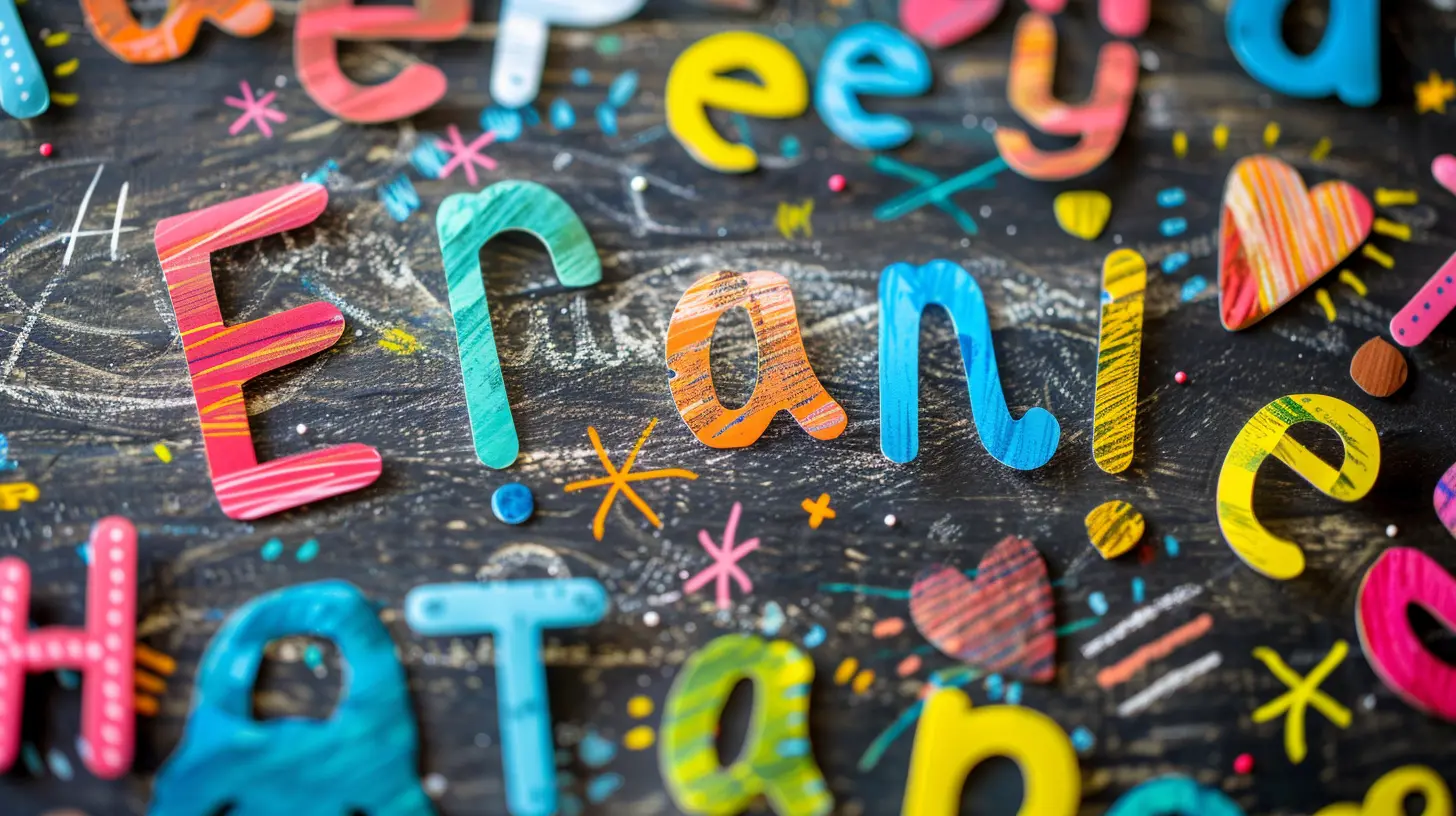How Language Transfer Affects New Language Learners
2 May 2025
Learning a new language is an exciting yet challenging journey. It’s like stepping into an unfamiliar world, where words, grammar, and expressions may not work the way you expect. But here’s the catch—your first language (or any other language you speak fluently) plays a big role in this journey. This phenomenon is called language transfer, and it can either help or hinder the learning process.
So, how does language transfer affect new language learners? Let’s dive in! 
What Is Language Transfer?
Language transfer occurs when a learner applies knowledge from their native language (L1) to the new language (L2) they're learning. This transfer can be either positive or negative.- Positive transfer happens when similarities between the two languages make learning easier.
- Negative transfer (also known as interference) occurs when differences between the languages cause confusion and errors.
Think of it like driving—if you’re used to driving a car with an automatic transmission (L1) and you switch to a manual (L2), some skills transfer smoothly, like using the steering wheel or brakes. But shifting gears? That’s where misunderstandings and mistakes can occur if you assume it works the same way. 
Positive Language Transfer: When Your L1 Helps
New language learners often benefit from similarities between their native and target languages. Here’s how:1. Similar Vocabulary = Faster Learning
Cognates—words that look and sound similar in two languages—can be a huge help. If you’re an English speaker learning Spanish, words like fantástico (fantastic) and nación (nation) feel familiar. This makes vocabulary building much easier.2. Shared Grammar Structures Reduce Confusion
If both languages follow similar sentence structures, learners grasp concepts more quickly. For example, French and English follow a subject-verb-object (SVO) order, making it easier for English speakers to construct sentences in French compared to Japanese, which follows a different pattern (SOV).3. Pronunciation Advantages
If two languages share similar sounds, pronunciation becomes less of a struggle. For instance, a Dutch speaker learning English might find certain sounds easier than a Japanese speaker because Dutch and English have overlapping phonetics.In short, when languages share elements, learners experience fewer hurdles and more confidence. Sounds great, right? But what happens when these transfers go wrong? 
Negative Language Transfer: When L1 Causes Trouble
Not all language similarities are helpful. Sometimes, differences can lead to frequent mistakes. Here’s how negative transfer can slow down the learning process:1. False Friends: Tricky Vocabulary Mistakes
Ever seen a word in another language that looks like an English word but means something entirely different? These are called false friends, and they can cause embarrassing mix-ups.For example:
- In Spanish, embarazada means pregnant, not embarrassed. So, saying “I’m embarazada” could get you some confused looks!
- The German word Gift means poison, not a present—so be careful when discussing gifts in Germany.
2. Grammar Mismatches Lead to Confusion
Every language has its own set of grammar rules, and applying L1 rules to L2 can lead to errors. For example:- In English, we say, “I have a car.”
- In French, it’s “J’ai une voiture.”
- But in Russian, you say, “У меня есть машина” (literally: "At me there is a car").
If an English speaker learning Russian directly translates their sentence structure, it won’t make sense. This is where negative transfer creates confusion.
3. Pronunciation Problems
Languages have unique sounds that don’t exist in others.- Spanish speakers learning English often struggle with the “th” sound (as in think), because it doesn’t exist in Spanish.
- English speakers learning French may pronounce r incorrectly, as French has a distinct guttural sound that English lacks.
When learners carry pronunciation rules from their native language, it can result in strong accents or misunderstood words. 
How to Overcome Negative Language Transfer
Alright, so we know language transfer isn’t always helpful. The real question is: How can learners minimize negative transfer and improve their language skills? Here are some tips:1. Be Aware of Common Interference Points
Recognizing patterns where your native language might interfere can help you avoid common mistakes. For example, if you’re learning Spanish as an English speaker, make mental notes of false friends (actual in Spanish means current, not "actual").2. Listen More, Imitate More
One of the best ways to overcome pronunciation struggles is by listening to native speakers. Whether it’s through music, movies, or podcasts, paying attention to pronunciation and rhythm can help you sound more natural.3. Translate Less, Think in L2
A big mistake learners make is translating everything word-for-word. Instead, try to think directly in the new language. It won’t be easy at first, but it’s a game-changer!4. Practice Speaking Without Fear of Mistakes
Fear of making mistakes often holds learners back. But guess what? Mistakes are a part of the process! Language learning is like riding a bike—you’ll fall a few times before you get the balance right.5. Surround Yourself With the Language
The more exposure you have, the more comfortable you'll feel. Change your phone’s language settings, label objects around your house, or even find an online language buddy. Immersion works wonders!Final Thoughts
Language transfer is a double-edged sword—it can boost your learning or create roadblocks. But don’t let the negatives discourage you! Understanding how your native language influences your new language journey gives you the power to use the positives to your advantage and work on the negatives strategically.So, the next time you catch yourself making a "language transfer mistake," don’t stress—just take it as part of the incredible language-learning adventure! Who knows? Maybe one day, you’ll be fluent enough to help others navigate the same journey.
all images in this post were generated using AI tools
Category:
Second Language AcquisitionAuthor:

Anita Harmon
Discussion
rate this article
6 comments
Gunner Banks
Language transfer significantly influences learners' acquisition processes, impacting pronunciation, grammar, and vocabulary, highlighting the importance of awareness in language instruction.
May 14, 2025 at 8:58 PM

Anita Harmon
Thank you for your insightful comment! You're absolutely right—awareness of language transfer is crucial for effective language instruction, as it shapes learners' pronunciation, grammar, and vocabulary acquisition.
Sadie McDougal
Understanding language transfer fosters patience and growth.
May 7, 2025 at 10:54 AM

Anita Harmon
Thank you for your insightful comment! Indeed, recognizing language transfer can enhance our patience and support growth in language learning.
Elle Romero
Great insights on language transfer! Understanding how native language influences learning can help educators tailor their methods. By recognizing these effects, we can better support new language learners in overcoming challenges and accelerating their progress. Keep up the great work!
May 7, 2025 at 4:46 AM

Anita Harmon
Thank you for your thoughtful comment! I'm glad you found the insights valuable. Supporting language learners through understanding transfer is crucial for effective education.
Molly Rhodes
Thank you for this insightful article! The exploration of language transfer sheds light on the challenges and advantages new learners face. Understanding how our first language influences the learning process can significantly enhance teaching strategies and learner experiences. I look forward to implementing these insights in my own language studies!
May 6, 2025 at 6:23 PM

Anita Harmon
Thank you for your kind words! I’m glad you found the article helpful and insightful for your language studies. Best of luck implementing these strategies!
Declan Estes
This article effectively highlights the nuances of language transfer, illustrating both positive and negative impacts on new language learners. However, it could benefit from deeper exploration of how individual learner profiles and contexts influence transfer, emphasizing the importance of personalized strategies in language acquisition.
May 3, 2025 at 12:00 PM

Anita Harmon
Thank you for your insightful feedback! I appreciate your suggestion to delve deeper into individual learner profiles and contexts, and I will consider this for future revisions to enhance the discussion on personalized strategies in language acquisition.
Morgan Blair
This article effectively highlights the nuances of language transfer in learning. It’s crucial for educators to recognize both positive and negative transfer effects, as this understanding can significantly enhance teaching strategies and learner outcomes. Great insights!
May 3, 2025 at 3:49 AM

Anita Harmon
Thank you for your thoughtful comment! I'm glad you found the insights on language transfer valuable for educators and learners alike.
MORE POSTS

Leadership in a Digital Age: Guiding Schools Through Technological Change

The Art of Self-Assessment: Improving Learning Through Reflection and Feedback

Empowering Students to Tackle Real-World Problems

How to Build a Strong Financial Foundation Before Graduation

The Role of Video in Modern E-Learning Platforms